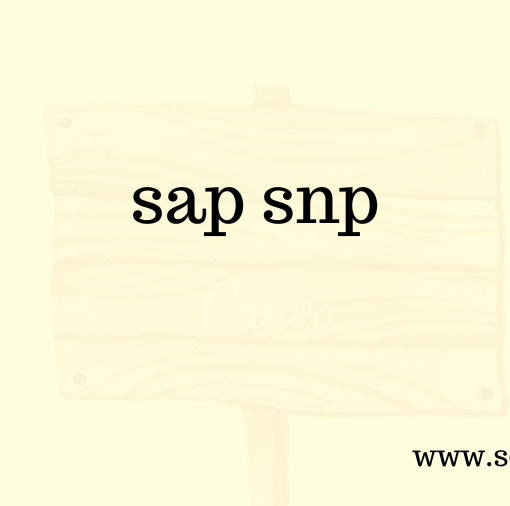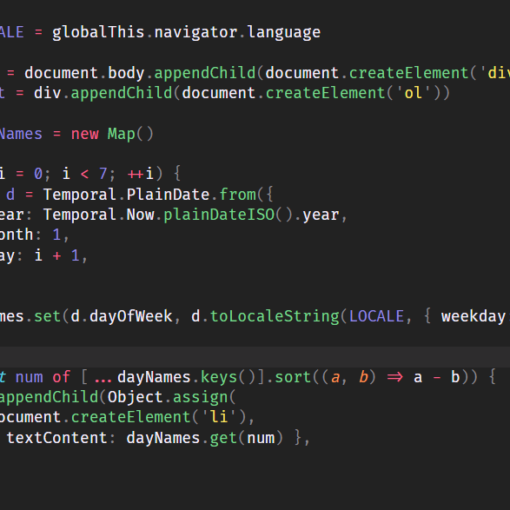The world of SAP consulting is often seen as a realm of technology and data, of complex systems and intricate configurations. But beneath the surface lies a potent undercurrent – the human factor. And when it comes to implementing successful SAP projects, navigating the waves of change within an organization is just as crucial as mastering the technology itself. Enter change management – the art of guiding people through transitions, ensuring they embrace the new and leave the past behind.This in-depth guide delves into the dynamic world of change management in SAP consulting, equipping you with the knowledge and strategies to become a catalyst for positive change, not just a technical wizard. From understanding the “why” to mastering the “how,” prepare to embark on a journey that will not only transform SAP systems, but also transform the people who rely on them.

Why Change Management? The Human Equation of SAP Projects
Imagine implementing a brand new production line in a factory. While the machinery and infrastructure are vital, they alone won’t guarantee success. You need the workers to adapt to the new processes, learn new skills, and overcome resistance to change. The same principle applies in SAP consulting – the technology is just one piece of the puzzle.
change management in SAP consulting helps you address the human side of implementation, ensuring:
- User Adoption: Users embrace the new SAP system and utilize its full potential, instead of clinging to old ways of working. It’s like helping the factory workers not just understand the new machines, but also see the benefits they bring and work enthusiastically with them.
- Reduced Resistance: Minimize employee resistance to change, preventing disruptions and delays in the implementation process. It’s like addressing their concerns, alleviating anxieties, and fostering a positive attitude towards the new system.
- Improved Communication: Ensure clear and consistent communication throughout the project, keeping everyone informed and engaged. It’s like regularly communicating with the factory workers about the changes, explaining the why and how, and keeping them involved in the process.
- Enhanced Training: Provide effective training programs that equip users with the skills and knowledge needed to excel in the new SAP environment. It’s like giving the factory workers proper training on operating the new machines, so they can work safely and efficiently.
- Sustained Benefits: Ensure the benefits of the SAP system are realized and sustained over the long term. It’s like helping the factory workers maintain and utilize the new production line long after the initial implementation is complete.
Mapping the Terrain: Understanding Different Change Management Techniques
change management in SAP consulting encompasses a diverse set of tools and techniques:
- Communication Strategy: Develop a clear, consistent communication plan to keep stakeholders informed about progress, address concerns, and build buy-in. It’s like establishing a communication hub in the factory, keeping everyone updated on the project’s progress, and creating a space for open dialogue.
- Resistance Management: Identify potential sources of resistance, understand their drivers, and implement strategies to overcome them. It’s like anticipating which workers might be apprehensive about the new machines, addressing their specific concerns, and providing them with support and reassurance.
- Stakeholder Engagement: Actively involve stakeholders in the change process, seeking their input and ensuring their support. It’s like inviting the factory managers and supervisors to participate in planning meetings, giving them ownership of the new production line, and encouraging their active involvement.
- Training and Development: Provide comprehensive training programs that equip users with the skills and knowledge needed to operate the new system effectively. It’s like training the factory workers on how to operate the new machines, ensuring they understand the controls, safety procedures, and best practices.
- Change Management Methodology: Choose an appropriate change management methodology, such as Kotter’s 8-Step Change Model or ADKAR, to guide your approach. It’s like selecting the right blueprint for constructing your new production line, ensuring a structured and effective approach to the change process.
Mastering the Strategies: From Planning to Successful Transformation
Conquering the change management wave requires a well-defined plan:
- Assess the Change Impact: Analyze the impact of the SAP project on different user groups and organizational levels. It’s like assessing how the new production line will affect different departments, work roles, and worker skillsets.
- Develop a Communication Plan: Create a comprehensive communication plan that outlines who will be communicated with, when, how, and what information will be shared. It’s like creating a communication schedule for the factory, ensuring everyone receives timely and relevant updates.
- Build a Strong Change Management Team: Assemble a dedicated team with expertise in change management, communication, and training. It’s like bringing together skilled engineers, communication specialists, and trainers to manage the implementation of the new production line.
- Engage Stakeholders Early and Often: Involve stakeholders from the outset, addressing their concerns, seeking their input, and building a sense of ownership for the change. It’s like involving the factory managers and workers in discussions about the new production line, understanding their perspectives, and incorporating their feedback into the planning process.
- Provide Effective Training: Design and deliver training programs that are tailored to the specific needs of different user groups. It’s like creating targeted training sessions for different worker groups based on their roles and responsibilities on the new production line.
- Monitor and Measure Progress: Track the progress of the change management efforts and measure their effectiveness against established goals. It’s like monitoring the performance of the new production line, identifying areas for improvement, and making adjustments as needed.
- Celebrate Successes: Recognize and celebrate successes along the way to maintain momentum and build enthusiasm for the new system. It’s like holding a ribbon-cutting ceremony for the new production line, acknowledging the hard work of everyone involved, and celebrating the achievement.
Beyond the Basics: Advanced Techniques for Change Management Mastery
For those seeking to become true change management champions, consider these advanced techniques:
- Change Champions: Identify and empower “change champions” within the organization who can advocate for the new system and support their colleagues. It’s like selecting “factory floor leaders” who understand the new machines well and can train and guide other workers.
- Gamification: Utilize game mechanics and storytelling to engage users and make learning more enjoyable. It’s like introducing a leaderboard competition for workers who master the new machines quickly, adding a fun and engaging element to the training process.
- Digital Adoption Platforms (DAPs): Leverage DAPs to provide personalized guidance and support to users as they learn the new system. It’s like using digital assistants on the factory floor that provide workers with on-demand instructions and troubleshooting tips.
- Resistance Management Coaching: Provide individual coaching to employees who are struggling with the change. It’s like offering additional support and guidance to workers who are having difficulty adapting to the new production line.
- Change Management Maturity Assessments: Conduct regular assessments to evaluate your organization’s change management maturity and identify areas for improvement. It’s like reviewing the overall performance of your factory change management process and pinpointing areas where you can further optimize and streamline.
The Rewards of Successful Change: Reaping the Benefits of Effective Change Management
Investing in effective change management in SAP consulting yields a multitude of rewards:
- Successful SAP Implementations: Minimized resistance, improved user adoption, and smoother transitions lead to successful SAP implementations that deliver the desired business benefits. It’s like seeing the new production line operating smoothly, workers utilizing it efficiently, and the factory hitting its production targets.
- Enhanced User Satisfaction: Happier and more engaged users who feel supported and empowered in the new system lead to increased productivity and morale. It’s like seeing the factory workers thriving with the new technology, taking pride in their work, and contributing to the factory’s success.
- Reduced Project Risks: Proactive management of change minimizes project risks associated with resistance, communication breakdowns, and inadequate training. It’s like preventing accidents and disruptions on the factory floor by implementing proper safety protocols and training procedures.
- Stronger Client Relationships: Delivering successful projects by understanding and addressing client needs builds trust and reinforces long-term partnerships. It’s like establishing a strong and collaborative relationship with the factory owner, ensuring their satisfaction and continued cooperation.
- Personal Growth: Mastering the art of change management challenges you professionally and personally, honing your communication, leadership, and adaptability skills. It’s like expanding your expertise beyond technical knowledge, becoming a trusted advisor who can guide people through complex transitions.
Final Words: Be the Change Catalyst
The journey of SAP consulting is not just about technology; it’s about people. By embracing change management as a core competency, you can transform yourself from a mere technology installer into a catalyst for positive change, guiding organizations through transitions, unlocking human potential, and propelling them towards a brighter digital future. So, step onto the change management wave, become a skilled navigator, and lead your clients towards a future where people and technology thrive in harmony!
You may be interested in:
A Deep Dive into SAP Multi Resource Scheduling (MRS)
The Future of Machines: Trends and Predictions




